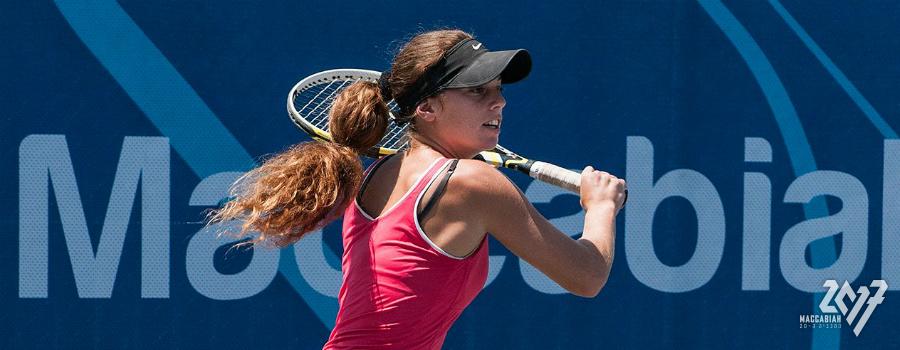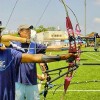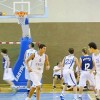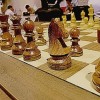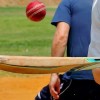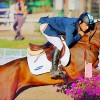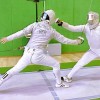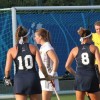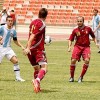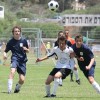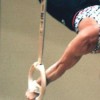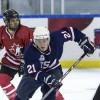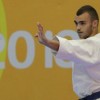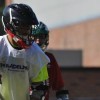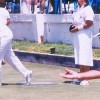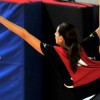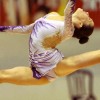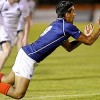Tennis
TENNIS REGULATIONS
Last update 28/07/16
- Organization
a. The Tennis Committee of the 20th Maccabiah will be responsible for the Tennis competitions of the 20th Maccabiah.
b. The Tennis tournaments will be conducted according to the ITF rules of Tennis and the rules as specified herewith.
c. Participation in the tournaments is open to any athlete who is in possession of a
Participant Card issued by the Organizing Committee of the 20th Maccabiah, and is registered for the Tennis competitions.
- Entry
a. The ages for the 20th Maccabiah will be as followed:
1) Juniors - Boys born between January 1, 1999 - December 31, 2002
2) Juniors - Girls born between January 1, 1999 - December 31, 2002
3) Males' Open
4) Females' Open
Masters - cut-off date: year 2017
5) Males 35 and up
6) Females 35 and up
7) Males 40 and up
8) Females 40 and up
9) Males 45 and up
10)Females 45 and up
11)Males 50 and up
12)Females 50 and up
13)Males 55 and up
14)Females 55 and up
15)Males 60 and up
16)Females 60 and up
17)Males 65 and up (Grand Masters)
18)Females 65 and up (Grand Master)
19)Males 70 and up (Grand Master)
20)Females 70 and up (Grand Master)
21)Males 75 and up (Super Grand Master)
22)Females 75 and up (Super Grand Master)
23)Males 80 and up (Super Extra Grand Master)
An older athlete can compete in a younger age group. In doubles, players will be entered into the age group of the younger player.
b. Each participating country may enter a maximum of 12 players (6 men and 6 women) in each age group. Any 6 of these players may be included in either singles or double draws. Any 6 men (boys) and 6 women (girls) may be included in the mixed doubles.
Masters Players may enter a maximum of two events.
a. In Grand Masters (65+ and 70+) and in Super Grand Masters (75+) a country is allowed to enter up to 8 players in Men and up to 8 players in Women events.
d. Each Masters player must sign a declaration of commitment to fulfill all their matches.
e. A player may represent his/her country only if in compliance with the relevant 2017 DAVIS Cup and FED Cup rules and regulations.
- Venues, Times and conditions of play
a. The Sport Department will determine venues and times of the tennis competitions.
b. The Referees are authorized to change venues and times and their decision is final.
c. The tournament will be held outdoors on Hard Court Surface, except of Grand and Super Grand Masters which will be held on Clay.
d. The following days ORDER OF PLAY will be posted at the Tennis venues and accommodation centers after the end of each days play. Only the order of play released and signed by the referees are binding.
e. Players entered into the 20th Maccabiah must be available to play at any time, according to the order of play, during the full duration of the tournament. There will be no exception to this rule. The ITF punctuality/no show regulation will be strictly enforced.
f. Referees will make every effort not to schedule matches between 13:00 and 15:30.
g. Four new balls will be provided for matches. New balls will be provided for third sets. There will not be a ball change in any of the Masters events. Practice balls will NOT be provided.
- Events
Singles doubles and mixed doubles in each age group specified in 2a (provided there are at least 8 competitors from at least 3 countries in the draw. If this requirement is not fulfilled, the players will be included in the next younger age group).
- Draws and seeds
a. The draws will take place on a date and at a place to be specified later. The draw ceremony is open to Heads of Delegations only. Information about player’s results to
b. be used for seeding purposes must be submitted no later than two weeks prior to the Maccabiah and no information received after this date will be considered.
c. Each head of delegation must present lists of up to 6 players (8 in grand masters) to be included in the draws.
d. Seeding in the Open and Junior events will be based on the most recent ATP, WTA and ITF Junior rankings respectively, then on all other available information provided.
e. Once the seeds have been determined in Open and Junior events, seeded players from the same country will be placed as follows: The first two in separate quarters, the next four in separate eighths. Unseeded players will be drawn into the remaining spots. There will not be more than 50% of a team in the same half of the draw where there are an even number of players and not more than 67% of a team in the same half of the draw where there are an uneven number of players. Wherever possible, a player will not be drawn to play against a fellow countryman in the first round.
f. In Masters Event there will be 2 stages of the tournament. During the first stage, the players will be placed into groups according to the following criteria:
1) If a given category has less or equal to 24 players - we will have 4 pools of a maximum of 6 players in each pool. The winners of the pools will play Semi-Finals and Medals Matches.
2) . If a given category has between 25 and 36 players - we will have 6 pools of a maximum of 6 players, two players with the best Ratio will advance into the Semifinals the other 4 will play Quarter Finals.
3) If a given category has over 36 players to a maximum of 48 players - we will have 8 pools of a maximum of 6 players and the winners of the groups will advance into the Quarterfinals conducted by a knock-out system.
4) The distribution of players will be made in accordance with the following procedures:
There will be no two players from the same country in the same pool. The national seeding list will be decided by the Nations Representative. Number one seeds from all the nations will be randomly drawn to the different pools. The mentioned above procedure will be repeated (for ranked 2, and other players) until all the players are drawn into the pools.
5) To determine the winner of the pool the following procedure to be used:
a) number of matches won
b) if two players are tied - a head to head result will determine the winner
c) if more than two players are tied - the % of games won will determine the winner. (or in case it determines the loser and other two players are tied - the winner of head to head match of the two winning players will determine the group winner)
d) randomly drawn
6) To compare the winners of the groups:
a) % of matches won
b) % of games won
c) randomly drawn
7) For the knock-out stage the following procedure will be followed:
The draw for the know-out stage will be made as following: If there is more than 1 player of the same nation in the knock out stage - the players will be drawn into different halves or if more than 2 players - into different quarters of the draw. The seeding for the knock-out stage will be decided by the best to worst Ratio of the winners of the pools.
- System of competition
a. Men’s and Women’s open (Singles)
The main draw will comprise of 24 players as follows:
16 direct acceptances using ATP ranking or other information available, followed by national rankings giving advantage to countries with a fewer number of players already in the main draw list.
8 qualifiers: The qualifying tournament will be played from the Sunday prior to the Opening Ceremony. Should there be 32 or fewer players entered, the main draw will comprise all players entered. A double knockout system (feed-in tournament) will be in effect up to and including the main draw semifinal losers. The finalists of the feed-in tournament will be the bronze medalist.
b. Juniors (Singles)
The main draw will comprise of up to 64 players entered. A double knockout system (feed-in tournament) will be in effect up to and inclusive of the main draw semi-final losers. The winner of the feed-in tournament will be the bronze medalist.
Note: Singles withdrawals/ substitutions
If a player withdraws or is withdrawn by the head of the delegation after the draw has been finalized, no substitution will be allowed except if the player is injured or ill. In this case the head of delegation will be permitted to enter a substitute provided that the tournament has not yet commenced.
Match formats
Qualifying:
Open and Juniors - 2 tie break sets + 10 deciding tie break
Gold draw
Open and Juniors - best of three tie break sets
Groups Stage – Masters – One pro-set up to 8 games (8:8 tie break)
Knock-out Stage – Masters – 2 tie break sets + 10 deciding tiebreak
Bronze draw
Up to semifinals inclusive:
Open & Juniors - 2 tie break sets (starting each set at 2:2) + 10 deciding tiebreak
Bronze Medal Match: same as gold draw
c. Doubles and Mixed Doubles Sign-in
A maximum of 6 players per country may be entered into the doubles events.
A maximum of 6 pairs per country may be entered into the mixed doubles events.
In masters, each country may enter a maximum of three pairs per event. They do not have to be players entered into the singles.
Doubles sign-in Tuesday before 18:00 with the referee.
Mixed doubles sign-in Wednesday before 18:00 with the referee.
Clarification Doubles and mixed doubles teams can comprise players from different countries when a player is unable to find a partner from his own country. If there are an uneven number of players from one country, the better players must pair while the last player will be permitted to pair with a player from another country.
Note: Doubles withdrawals/substitutions
If, after the doubles draws have been finalized, but before the doubles tournaments has commenced, one player from a team withdraws, then the remaining player is allowed to pair with someone else. If a team withdraws, no substitution will be allowed.
If a player withdraws after the doubles tournament has commenced, then that team will be defaulted.
Match formats
Open & Juniors - 2 tie break sets (using no-ad scoring system) + 10 deciding tiebreak
All Masters doubles matches will be played as one pro-set to 8 games (8:8 tiebreak)
- Administrative error
Players/teams who have been left out of the draw due to administrative error will be drawn to replace a bye. If no bye exists in the draw, a pre first round match will be drawn against a non-seeded player/team from a different country.
- Officiating
a. The Tennis Committee will appoint the referee one year prior to the 20th Maccabiah. The referee, in consultation with the Tennis Committee, will appoint two assistant referees.
b. These three referees will appoint chair and roving umpires as will be required.
- General
a. These regulations form part of the complete 20th Maccabiah Regulations and must be read along with the instructions found in “Basic Regulations and Disciplinary Procedures”.
b. In the event of a discrepancy between the regulations written here and those appearing in the “Basic Regulations”, the regulations written here will apply and be binding.
c. Rulings not covered in any of the regulations will be resolved by a Court of Appeal comprising the referee and four heads of delegation to be appointed at the draw ceremony. A head of delegation whose country is involved in any appeal may not vote thereon. A referee and two heads of delegation will constitute a quorum. In the event of a tied vote, the referee will cast a deciding vote.


